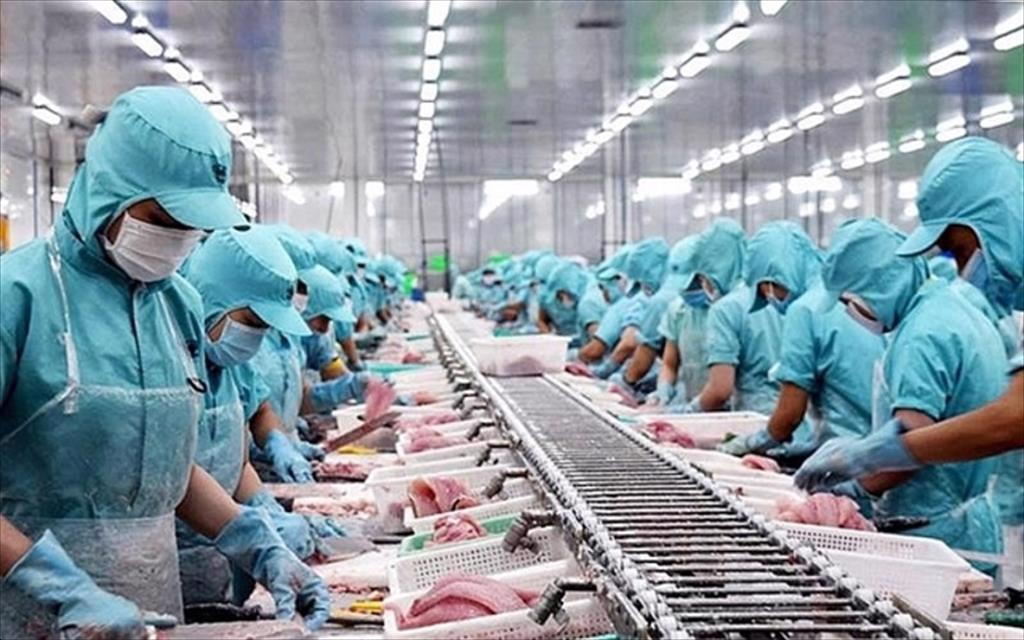(vasep.com.vn) Vietnam seafood exports have reached 6.6 billion USD in the first nine months of this year, a 22.6% decrease from the same period the previous year. Exports fell significantly (by 27%) in the first half of the year, but starting in June, the negative growth trend began to narrow. Particularly in September 2023, export sales were just 5% lower than the same period last year.
As a result, the third quarter's total seafood export turnover is just 12% lower than the third quarter of 2022, which is also the smallest decline in the year's first three quarters.
The overall export picture shows that main items such as shrimp, pangasius, and tuna all had a larger fall in export sales than other species during the first nine months of this year. Pangasius exports were the most affected (-31%), followed by shrimp (-26%), and tuna (-24%). Meanwhile, compared to the same period in 2022, cephalopod, crabs and shellfish declined by 10-18%, while other marine fish decreased by only 8%.
The group of three key products, including shrimp, pangasius and tuna, all showed more positive signs in the third quarter, with the highest export turnover and the lowest negative growth since the beginning of the year. After a decrease of 28% in the second quarter, in the third quarter, shrimp exports were only 13% lower than in the same period 2022. Meanwhile, pangasius sales were 12% lower, and tuna sales were down nearly 8%, compared to -41% and -31%, respectively, in the second quarter this year.
Exports of other marine fish products have the opposite trend: the deepest decrease in the third quarter (-15%), after increasing 2% in the first quarter and decreasing 9% in the second quarter. Lack of raw materials and problems related to control under IUU regulations can be one of the reasons why marine fish exports are more difficult.

The most encouraging evidence is that crab products (mostly swimming crab) saw a significant growth in export turnover in the third quarter, more than 1.5 times higher than in the second quarter and up 2% over the same period last year.
Seafood exports to major consumer markets such as the US, EU, China, and Korea all decreased by 17–34%, while exports to Japan decreased less (-13%). Among major market blocks, the Middle East has been considered an attractive destination for Vietnamese businesses in the last 2 years, in the face of war fluctuations, inflation, and the energy price crisis. In the third quarter, this market block alone had a positive growth in seafood imports from Vietnam, at 2% compared to the same period in 2022, and the cumulative first 9 months of the year also had the lowest decrease, down 8%. Exports to ASEAN and CPTPP markets decreased by 15% and 20%, respectively, over the same period.
The third quarter's seafood export results improved compared to the first months of the year, but there has not been a sufficient breakthrough to see a steady trend in the near future because the comparison of the first half of 2022 was at a low level after growing high in the first half of 2022.
The level of recovery in seafood export sales in the coming time depends largely on two main markets: the US and China. Both of these markets have positive signals in terms of demand. Orders from these two markets are recovering, but export prices are still lower than in the same period last year. For example, the average export price of frozen pangasius fillets to the US market in the first nine months of this year was continuously 25–40% lower than the same period in 2022. In addition to other white meat fish species such as cod, pollock, and tilapia, pangasius exports to the US will have to compete with the inventory by 2022. Experts predict that at least until 2024, the opportunity for recovery will be more manageable when the pressure on inventory is no longer large.
In terms of the Chinese market, not only Vietnam but many other exporting countries are looking forward to a steady recovery after COVID-19, particularly after the holidays this fall, when Chinese demand often spikes. Because many supplies target this market, the buying price of Chinese importers is low. However, as China bans Japanese seafood imports, this market remains a potential for Vietnamese exporters.
With the gradual recovery of markets, it is expected that Veitnam seafood exports in the fourth quarter will bring in about 2.4 billion USD, which is equivalent to the same period last year, bringing the export turnover for 2023 to 9 billion USD, which is 17% lower than the same period last year.